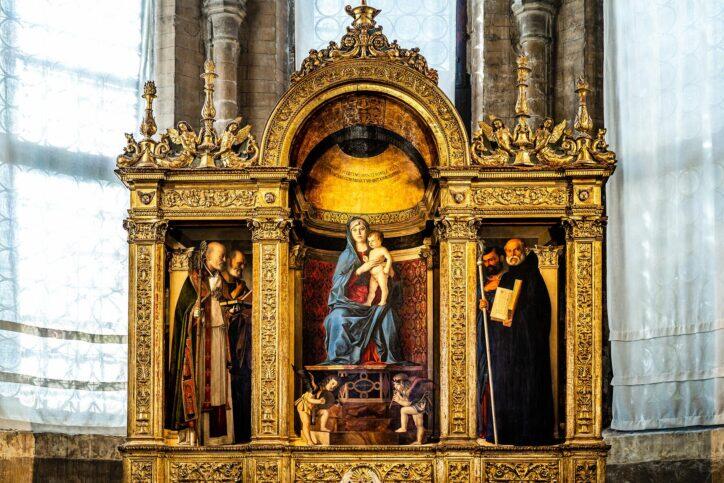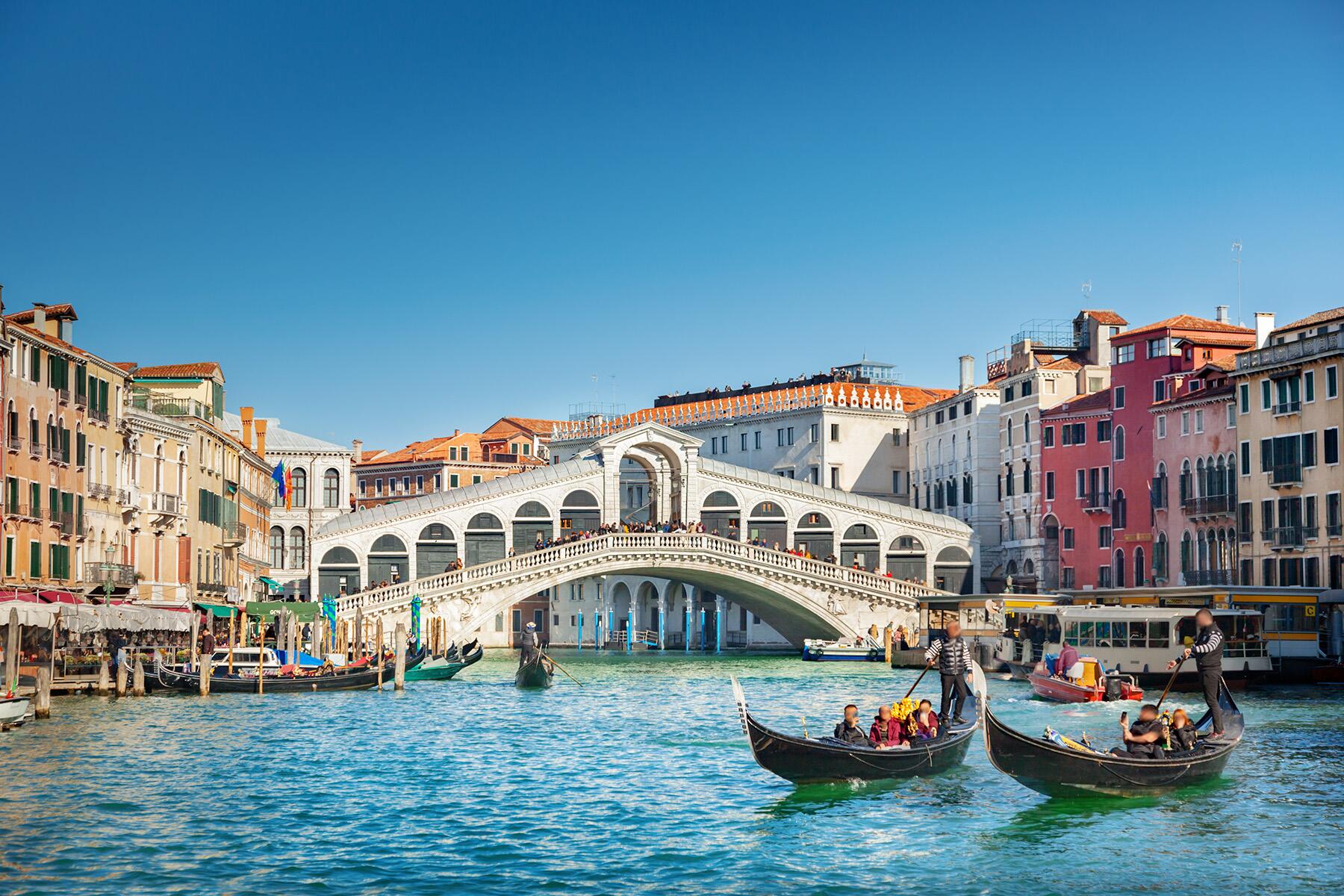The thanksgiving festival of Festa della Madonna della Salute has been celebrated every year on November 21 since 1631.
On a chilly November morning in Venice, the damp air in the narrow Salizada San Stae is imbued with a fragrant, meaty scent. A handwritten sign stuck to the window of Boresso alerts customers that today: the bar will be serving castradina.
This historic dish is only made once a year in Venice as part of a ritual cherished by the city’s dwindling population. Behind its fame is a story of a devastating plague, Dalmatian saviors, and the Virgin Mary.
The Meat That Saved Venice
In 1630, the Republic of Venice was struck by a particularly virulent plague that ravaged the city relentlessly, spreading across the island in a matter of weeks. Completely closed off from the mainland, the Venetian population was fighting both illness and starvation.
Their saviors came in the form of the Dalmatians, the population along the coast of present-day Croatia and a Venetian colony at the time. They sent the famished Venetians legs of mutton, a foodstuff that may not seem typical of the island in the Adriatic, but which has a long history for the republic.
“Mutton had been an indispensable resource on trade ships that crossed the Adriatic heading to Greece and Turkey as early as the 11th century,” explains Marino Keller Bard, a Venetian historian and global tour guide. The meat was dried, seasoned, and smoked so it could be preserved for a long time. Along the Dalmatian coast, the ingredients were in surplus. On hearing of the Venetians’ plight, the colonies began to send shiploads of mutton to the stricken island.
Recommended Fodor’s Video
A Prayer to the Virgin Mary
By 1631, however, the plague was threatening to claim a quarter of the population of Venice. In desperation, the doge—the ruler of the Venetian Republic—organized a three-day-long procession to pray to the Virgin Mary for deliverance. Miraculously, the plague’s grip began to lessen and in November of that year, it was extinguished altogether. The death toll stood at around 47,000.

To express its extreme gratitude for the salvation, the government decreed to repeat the devotional procession each year in honor of the health-giving Virgin Mary, or ”Madonna della Salute”—and to thank the Dalmatian saviors. In 1687, construction finished on the Basilica di Santa Maria della Salute, a baroque confection of a church, and it became the focal point of the devotees’ celebrations.
The Venetian Festival of Health
Aside from world wars and the COVID-19 pandemic, the Festa della Madonna della Salute, as this thanksgiving festival is called, has been celebrated every year on November 21 since 1631. In the gray light of a misty morning, crowds are already winding through Venice’s narrow alleys towards the Basilica della Salute. The extravagantly domed church with voluptuous scrolls sits like a beacon at a point of land near the end of the Grand Canal known as the Punta della Dogana.
A few days before the 21st, the city constructs a temporary bridge floating on boat-shaped pontoons that crosses the Grand Canal near the church. But most people wait until the day of the festival to shuffle their way across to the church and light their votive candle. “There isn’t a single Venetian that doesn’t celebrate this festival,” says Keller Bard.
After the religious rites, thoughts turn to more corporeal concerns. Just down the street from the church, a couple of squares are filled with brightly colored stalls sparkling with sticky sweets and glazed donuts. At spitting deep fat fryers, aproned staff churn out chunky disks of dough known as frittelle. Delicately flavored with orange, they are dunked in vats of sugar and eaten hot.
The Soup Eaten But Once a Year
The culinary culmination of the festivities, however, is the castradina. Across Venice, eateries from tiny bars to the grand restaurants lining St. Mark’s Square prepare the dish that replicates the food the Dalmatians brought to save the starving population. It’s the only time of year that you can taste this dish, and restaurants stick up temporary signs to inform customers that it’s on the menu. Many Venetians also choose to make it at home, gathering together with family and friends.

The star ingredient of the dish is the mutton from a castrated sheep that has been dried and seasoned with herbs. A few days before the November 21, butchers in Venice order the fragrant mutton legs and hang them up in their windows. The rest is simple: cabbage, broth, and peppercorns—some Venetians also add wine, juniper berries, and bay leaves. The preparation, however, requires patience. The dried lamb has to be boiled several times to soften the potent flavors. “It should be boiled three times, in fact, to recall the three days of prayer for deliverance from the plague,” explains Keller Bard. The water from the final boiling of the meat forms the basis of the stew, which then bubbles away for several hours.
At lunchtime, the narrow interior bar Boresso is crammed with customers returning from a bone-chilling couple of hours waiting in line to light their candles. The air is hot and fragrant. Owner Alessandro Fantin dishes up his steaming castradina soup into earthenware bowls with mounds of crusty bread. The broth is clear and light in color, with strips of dark pink lamb now so tender it looks like pulled meat. It is packed with flavor but remains delicate, the aromatic peppercorns enlivening the taste.
Fantinhas created his own tradition within a tradition on this day. “I’ve been making castradina for about 15 years now,” he says. “Today is a local holiday, but tomorrow when workers go back, they’ll come and eat it for lunch.”
Cecelia Pierotti, an American who moved to Venice three years ago, has joined the convivial atmosphere in the bar this year. “This is my absolute favorite festival in the city, it’s the only one that really feels Venetian,” she says. “It’s a time when there are fewer tourists in the city and we residents come together to celebrate something deeply rooted in Venice’s history.”
Seeing so many Venetians unite for the celebration is an antidote to the evermore depressing news of the exodus of residents to the mainland and influx of tourists in their place. The Festa della Salute is a festival that celebrates both the historical and present-day hardiness of Venetians in bleak circumstances and one that is keenly felt by the population. In fact, many Venetians who have moved to the mainland come back over for the day. “I think even if there was only one Venetian left in Venice, they’d still prepare castradina on the Festa della Salute,” says Keller Bard.




